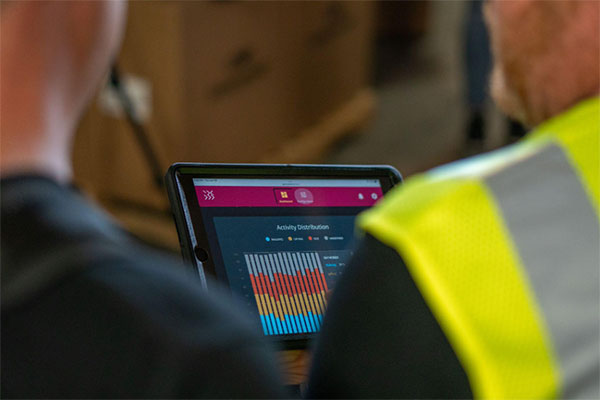Wearable safety technology is revolutionizing workplaces and boosting worker safety across various sectors.
By Armin G. Schmidt, CEO and founder at German Bionic
In an era of dynamic change, industries are standing at a critical crossroads where the convergence of demographic shifts, labor shortages, and supply chain bottlenecks is reshaping the landscape. The significance of workplace injuries and illnesses further highlights the need for urgent change. According to the Bureau of Labor Statistics, commercial industry employers report around 2.6 million nonfatal occupational injuries and illnesses annually, resulting in $167 billion in avoidable costs. Industries heavily reliant on labor-intensive tasks, like logistics, construction, automotive repair, airport baggage handling, healthcare, and parcel delivery services, bear a disproportionate share of this burden.
Addressing these complex challenges demands a multifaceted approach that embraces innovation and redefines the future of work. At the forefront of this transformation is wearable safety technology, which has emerged as a game-changer, poised to enhance operations, reduce injuries, and reshape the very fabric of industrial processes.
Today, many forward-thinking companies are embracing a hybrid-automation strategy that leverages wearable technology to amplify human potential and protect worker health and wellbeing. Contrary to robotics, which is the application of engineering towards replacing humans from manual tasks, exoskeletons and wearable devices work in tandem with the user, acting as amplifiers that augment, reinforce, and/or restore human performance. In industrial settings, for example, an exoskeleton or wearable tools may offer lifting support or assistance in the performance of repetitive tasks such as assembly line work or material loading and unloading.
The composition and design of exoskeletons and wearable tools are inherently flexible, adapting to the specific intended application of each device. The structural framework of this technology spans a spectrum, encompassing diverse forms. At one end lies the comprehensive full-body suit, powered by batteries and motors, and constructed from robust elements such as metal or carbon fiber. Conversely, alternative variants for more moderate levels of support might feature passive (i.e., non-powered mechanisms using springs and dampers, and constructed from pliable and elastic components). Other types focus on protecting specific body regions, such as the back, and are much less intrusive than full-body versions, yet use the power of robotics to provide a higher level of active support. Latest models can also feature full connectivity to provide greater insights into work processes and potentials to improve worker safety. The innovation within the realm of wearable safety technology caters to a broad array of functionalities, each tailored to unique demands and objectives of the individual employee and their job function.

While automation has made significant strides in streamlining processes, there are certain contexts where human involvement remains essential. Wearable safety technology bridges this gap.
As these benefits suggest, wearable safety technology complements automation by capitalizing on human strengths, while mitigating risks and enhancing overall operational efficiency. It empowers workers to take on complex tasks, respond to real-time challenges, and collaborate seamlessly with automated systems, creating a harmonious and effective work environment.
Beyond the realm of injury prevention, wearable technology plays a pivotal role in enhancing overall productivity and employee satisfaction. By rendering manual labor safer and more seamless, wearables become instrumental in both retaining existing workers and attracting new talent. These innovations epitomize an organization’s commitment to its workforce.
As the landscape continues to evolve, wearable technology stands as a beacon of promise. The fusion of human expertise and technological prowess is ushering in an era where safety, productivity, and innovation harmonize seamlessly. With each stride forward, the manufacturing industry inches closer to a future defined by empowered workers, optimized processes, and a safer, more sustainable work environment.

ARMIN G. SCHMIDT is a serial entrepreneur in the field of cloud-based products and services. As co-founder and CEO of German Bionic, Schmidt oversees the development of forward-looking, smart wearable tools such as the CES 2023 “Best of Innovation Award” winning robotic exoskeleton as well as workplace safety analytics tech. Previously, Schmidt founded and led the streaming service Aupeo and the automotive software platform Advanced Telematic Systems (ATS). He sold Aupeo to Panasonic Automotive North America, and ATS was acquired by HERE Technologies. Prior to founding German Bionic he was Senior Director at HERE Technologies. Armin Schmidt has worked and lived in Asia, the U.S. and Europe. He currently lives in Berlin, Germany.
Scott Ellyson, CEO of East West Manufacturing, brings decades of global manufacturing and supply chain leadership to the conversation. In this episode, he shares practical insights on scaling operations, navigating complexity, and building resilient manufacturing networks in an increasingly connected world.